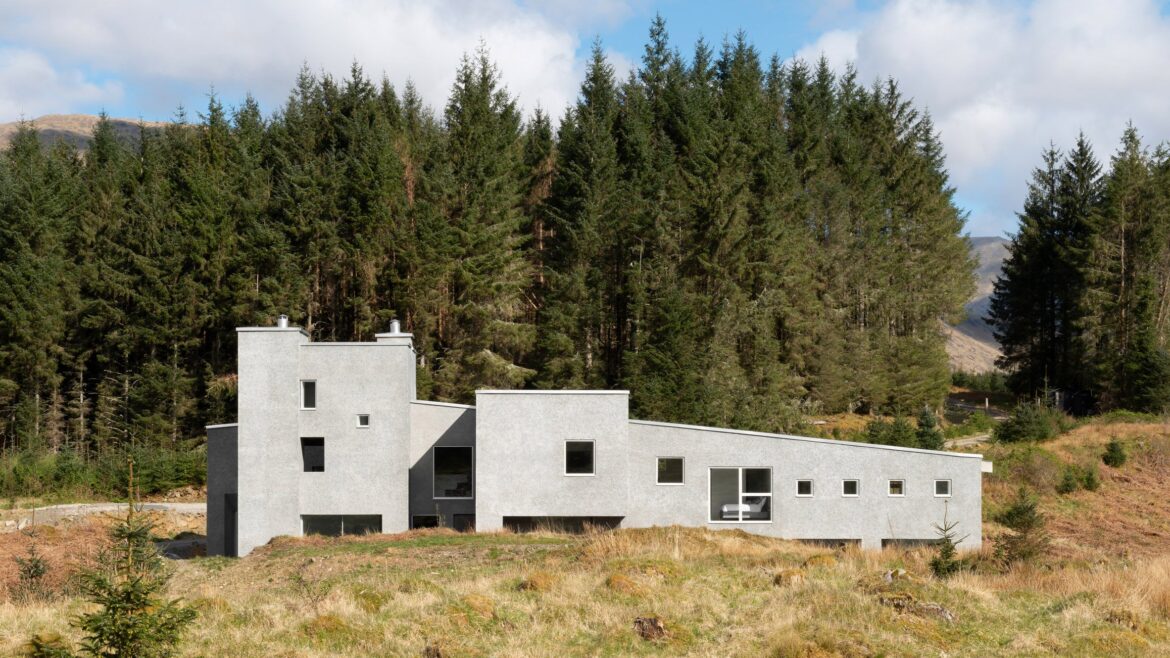The Scottish Highlands are some of the most breathtaking landscapes that the UK has to offer so it is little wonder that people want to build homes there to make the most of the stunning views and few do more so than Hundred Acre Wood House from Denizen Works. Overlooking Loch Awe in Scotland, Hundred Acre Wood House doesn’t play by the conventional rulebook when it comes to design and boasts innovative touches like recycled TV screens covering the walls of these seven-bedroom home.
The castle-esque dwelling of Hundred Acre House from Denizen Works was designed for a couple with six children on former Forestry Commission land with its own private lake and the architects behind the build have lowered the house into a hollow in the landscape, a move that makes it appear as though it emerges out from the ground on the north and south elevations.
With a brief to build a family home for their clients and their six children – as well as an increasing number of grandchildren – that would reflect their personalities and provide a lasting legacy for the family, Denizen Works set about creating this stunning piece of retro-modern design and we’re loving the muted aesthetics both externally and internally here at Coolector HQ. Its layout aims to make sure that it has the least visual impact on the nearby road, it makes the most of its privileged vantage point above Loch Awe and that its rooms align with the movement of the sun.
One of the most striking design features of Hundred Acre Wood is, as you’ve likely noticed, its facade, which is covered in recycled and crushed TV screens for a low-maintenance, pebbledash-like finish. This was an idea conceived and developed by Denizen Works as a take on a traditional Scottish harling – a rough wall finish that is made from lime and aggregate and it delivers an impactful visual to say the least.
Images: Gilbert McCarragher.
- VERO Forest Service Edition Watches - May 1, 2024
- P & Co Summer Collection 2024 - May 1, 2024
- 8 Refreshing Gins to Try This Summer - May 1, 2024
















